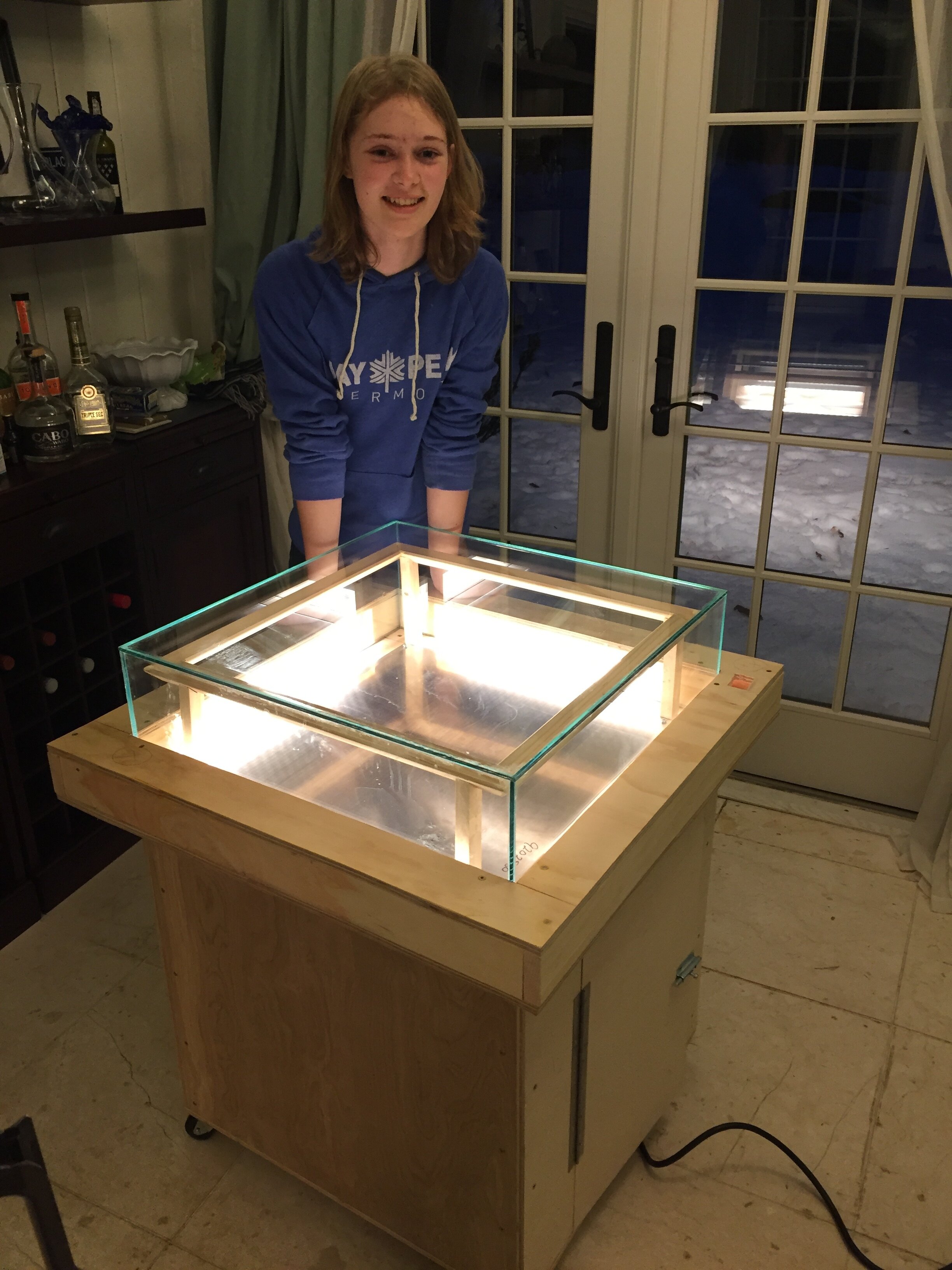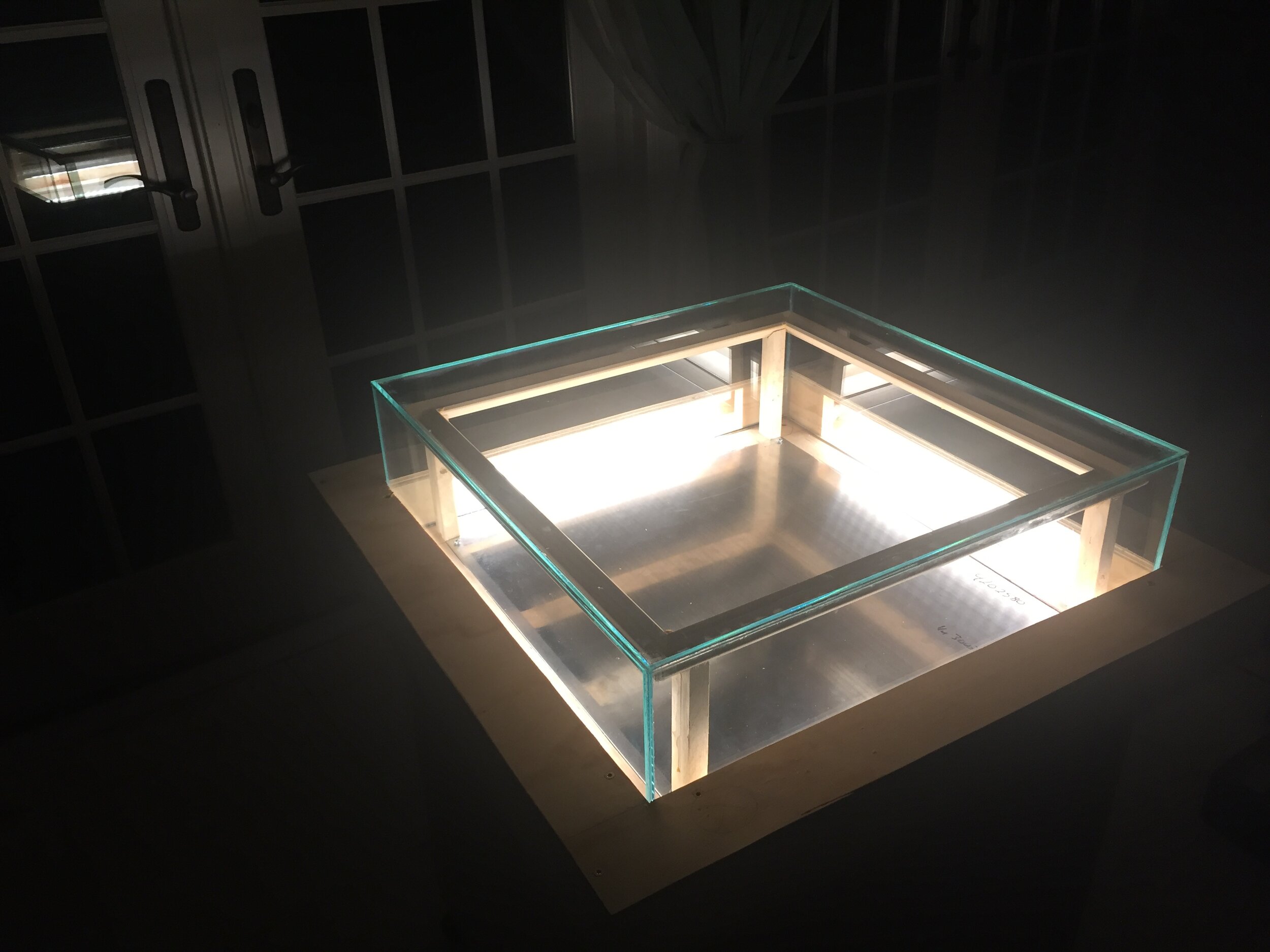Building a Continuously Sensitive Diffusion Cloud Chamber
In 2016 I built a temperature stable diffusion cloud chamber for science fair
A cloud chamber is a device that makes it possible to see the paths of particles emitted as a result of radioactive decay. When sub atomic particles enter the chamber they collide with air or alcohol molecules producing free ions. The ions serve as a starting point for the growth of visible droplets in the space that contains more condensed vapor than typically found. The droplets form visible trails like what you might find behind a jet aircraft high in the atmosphere. The cloud chamber provides the ideal conditions for creating this super-saturated layer.
Cloud chambers work by holding an atmosphere of alcohol vapor, which is created by evaporating alcohol. Inside the chamber is a cooling plate. Alcohol evaporates in the air at the top of the chamber and then changes back to a liquid at the bottom cooling plate. In between this state change a super-saturated layer forms. Within this layer particle trails can be seen.
To make the project work, you need a plate cooled to below -27 degrees Celsius. The temperature gradient between the top of the chamber and the bottom cold plate creates the ideal conditions for a super-saturated layer to form.
If no super-saturation forms, you will not be able to see the passing particles. Due to this, much of this project is concerned with creating a simultaneously super cold lower and hot upper environment within the chamber.
Below you can see the cloud chamber in operation. You can see the particle trails form in the super-saturated layer.








